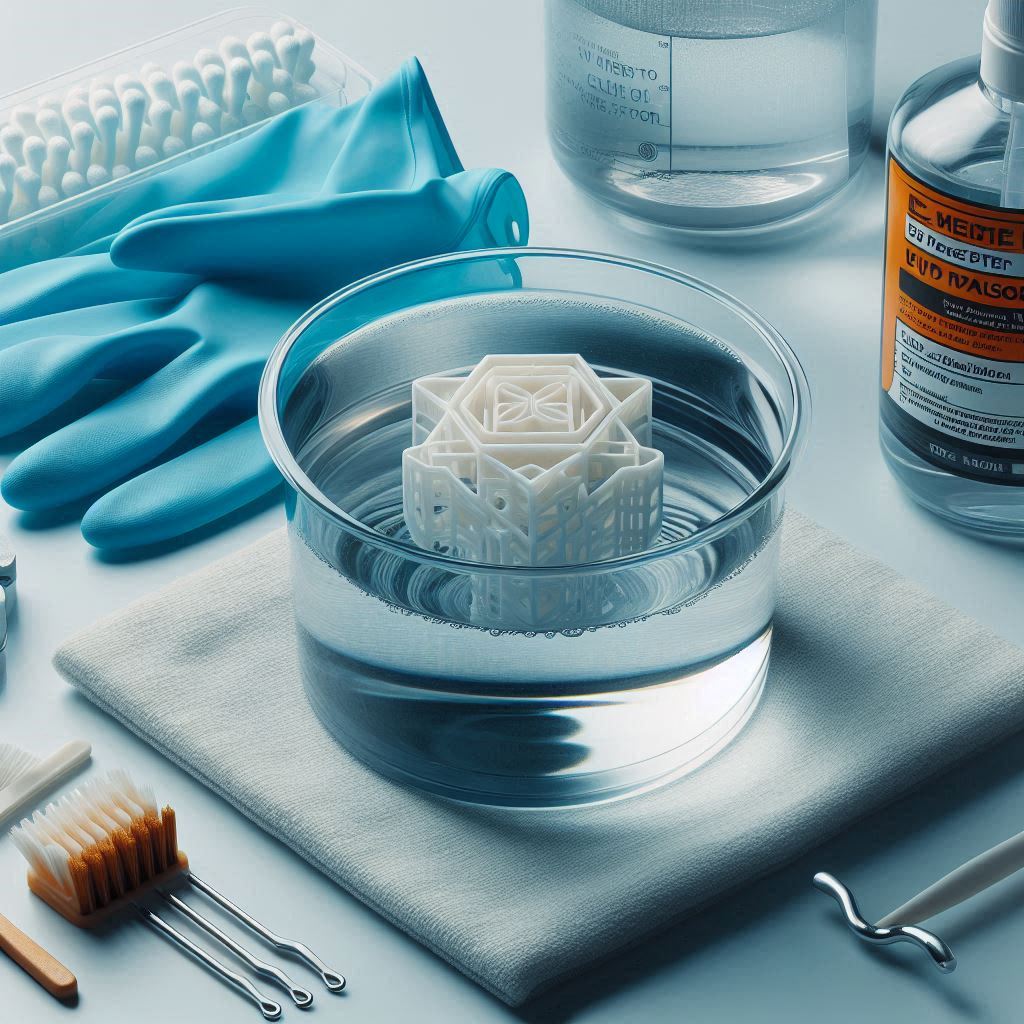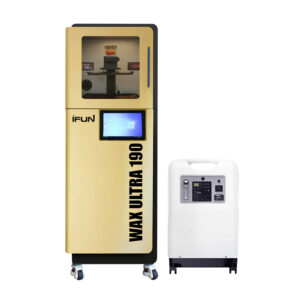UV resin printing has revolutionized the 3D printing industry, providing incredible detail and precision for various applications, from jewelry to medical devices. However, achieving high-quality results with UV resin involves more than just printing. One of the critical steps in post-processing is rinsing UV resin parts. Improper rinsing can lead to surface imperfections, weak structures, and overall poor final output. In this article, we’ll explore the best practices for rinsing UV resin parts, offer tips to avoid common mistakes, and provide guidance on how to handle different types of UV resin and molds.

Why is Rinsing UV Resin Parts Important?
When printing with UV resin, it’s essential to rinse the parts thoroughly after the printing process. This step removes any uncured resin that remains on the surface of the printed object. If the part is not properly cleaned, residual resin can lead to several problems:
- Surface imperfections: Uneven surfaces or tackiness that affect the visual and tactile quality.
- Weak structural integrity: Uncured resin can result in parts that are more prone to breaking or deforming.
- Compromised curing process: Unclean parts can result in poor adhesion to the curing light, leading to incomplete hardening.
Therefore, rinsing UV resin parts correctly is a critical step to ensure the durability and appearance of the printed object, especially for precision-based applications like UV resin molds used in jewelry, prototyping, or dental models.
Best Practices for Rinsing UV Resin Parts
Proper rinsing ensures your prints are clean, durable, and ready for final curing. Here are some best practices:
Use the Right Cleaning Solvent
Choosing the correct solvent is crucial for cleaning UV resin prints. The most common cleaning agents are isopropyl alcohol (IPA) and ethanol. However, not all solvents are created equal, and different types of UV resin may require different solvents.
- Isopropyl Alcohol (IPA): The most popular solvent for rinsing UV resin parts, especially when using hard or standard resins. IPA effectively dissolves uncured resin without affecting the print’s surface quality.
- Ethanol: A good alternative, especially for delicate prints. It’s less harsh than IPA but still effective at removing resin.
- Specialized Cleaning Solutions: Some manufacturers offer cleaning solutions designed specifically for certain types of UV resin molds or specialty resins, such as dental or flexible resins. These solutions can provide optimal results without damaging the resin.
Rinsing Time and Method
The rinsing time will depend on the type and size of your print. Typically, parts should be rinsed for 5–10 minutes in a solvent bath. However, always check the manufacturer’s recommendations for the resin you are using. Rinsing too long may lead to excess resin removal, affecting the structural integrity.
Steps to Rinse:
- Prepare the Solvent: Fill a container with IPA or your chosen solvent.
- Submerge the Part: Place the printed part into the solvent and let it soak for a few minutes to loosen any uncured resin.
- Agitate Gently: Swirl the solvent gently or use a cleaning machine (such as an ultrasonic cleaner) to remove resin more efficiently.
- Brush Off Excess Resin: For stubborn spots, use a soft brush (preferably a paintbrush with soft bristles) to clean hard-to-reach areas.
- Rinse with Clean Solvent: For thorough cleaning, rinse the part with fresh solvent.
- Dry the Part: After rinsing, dry the part by placing it on a clean, dry cloth or using an air compressor to blow off excess solvent.
Use a Cleaning Station
For efficiency, especially with larger batches or multiple prints, consider using a UV resin cleaning station. These stations are designed to make rinsing UV resin parts faster and more effective. They feature a rotating basket or ultrasonic capabilities that gently agitate the parts in the cleaning solvent, ensuring a more thorough rinse without damaging the delicate parts.
How to Rinse Different Types of UV Resin Parts
Different types of UV resin parts may require specific rinsing methods. Understanding the nuances can help avoid issues like surface damage, resin leakage, or deformation.
- Hard Resins
Hard resins are the most common type used in 3D printing. They are relatively easy to rinse and don’t require special care.
- Rinsing Time: 5–10 minutes in IPA or ethanol.
- Considerations: Hard resins can withstand longer exposure to solvents without issues. Just ensure you don’t agitate too aggressively, which can cause damage to thin or fine details.
- Flexible Resins
Flexible resins are more sensitive and need extra care during the cleaning process. These resins can deform or lose their elasticity if exposed to harsh solvents or extended rinsing times.
- Rinsing Time: Limit to 2-5 minutes in a mild solvent (such as low-concentration IPA).
- Considerations: Always use gentle agitation and avoid scrubbing with brushes. Prolonged exposure can cause flexible resins to lose their intended properties.
- Transparent Resins
Transparent resins are often used for applications requiring clarity, such as jewelry casting molds or prototype parts. These resins can be tricky to clean since any residue can impact the final finish.
- Rinsing Time: 5 minutes max.
- Considerations: Transparent resins are more sensitive to solvents that can leave visible streaks or dull the finish. Ensure to dry the parts thoroughly and avoid using abrasive tools that can scratch the surface.
- UV Resin Molds
Molds made from UV resin are commonly used in jewelry-making, dental applications, and casting. These molds must be carefully cleaned to maintain precision.
- Rinsing Time: 5 minutes or less.
- Considerations: For UV resin molds, especially those used for casting, ensure that you rinse all the corners and details where uncured resin can collect. Use a soft brush to clean intricate features without damaging mold surfaces.
Frequently Asked Questions (FAQ)
Q1: How can I tell if my UV resin part is fully cleaned?
You can tell if your part is fully cleaned by checking if it feels smooth and no longer sticky to the touch. Additionally, when inspecting the print under UV light, any residue should not fluoresce, indicating that the uncured resin has been completely removed.
Q2: Can I reuse my cleaning solvent?
Yes, you can reuse your cleaning solvent if it hasn’t been contaminated with too much resin. However, be sure to filter it before reusing it to remove any solidified resin particles. Over time, the solvent’s cleaning efficiency will decrease, and you will need to replace it.
Q3: Is rinsing UV resin parts necessary even if I plan to cure them immediately?
Yes, rinsing is essential even before curing. Any uncured resin left on the part can prevent the UV light from fully curing the print, leading to uneven hardness or structural issues.
Q4: How do I handle larger parts during rinsing?
For larger parts, it’s best to use a dedicated UV resin cleaning station or ultrasonic cleaner, which will allow for more effective rinsing without requiring excessive manual handling.
Q5: Can I use acetone to clean UV resin parts?
While acetone can clean some types of resins, it is not recommended for most UV resin prints as it can degrade the surface and affect the print’s quality. It’s best to stick with IPA, ethanol, or resin-specific cleaners.
Rinsing UV resin parts is a crucial step in the 3D printing process, as it ensures that the prints are free from uncured resin and ready for final curing. By following best practices, such as using the right cleaning solvent, controlling rinsing times, and selecting the appropriate method for different resin types, you can prevent common issues and achieve high-quality results. Whether you’re working with UV resin molds or standard prints, proper cleaning ensures that your 3D-printed parts have the durability, surface quality, and precision that your projects demand.

